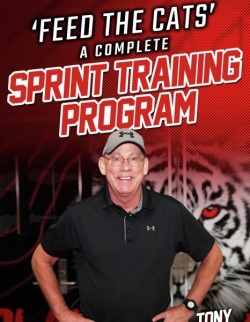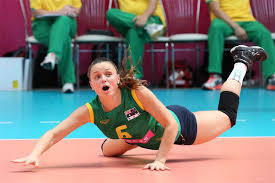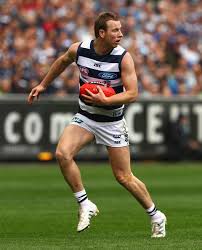“Feed the Cats”, the AFL and Aerobic Development.
Interesting to see how the Feed that Cats philosophy with Tony Holler has spread on Social Media. Now he is 100% correct that when developing speed and acceleration the only way is to train at high (maximal) intensity with lots of rest. Plus it is a fundamental need that many in team sports coaches stuff up & thus trash quality athletes. But all you have to do is study some ‘science” and the dogma underpinning this “need for speed”. It is in the books. Read a bit about energy systems and things like neuromuscular and all or none etc. Guess not many do. So agree it is a critical message he vividly communicates so that coaches understand the key difference between speed and fitness.

Before I wrote this blog article I read his interesting article http://trackfootballconsortium.com/a-football-coachs-guide-to-feeding-the-cats/. I just wanted to get some tiny insight. He puts forward a little model for planning a week with American Football and does mention what he calls “alactic” intermittent or repeat effort training on the 2nd day. So pretty interesting and by emphasising recovery and quality he certainly rams home the message that many coaches just cram JUNK training in.
But think about the recent US Open final between Nadal and Medvedev. There is a bit more to all this. There is a BUT! I always am the BUT person HA. So many sports do put a lot of stress on the aerobic system to get that ATP “back in”. Added to this is fact that every athlete is different and has different needs. So in one team of say AFL we can have a range of slow twitch players to 50/50 twitch layers to fast twitch players. But they all have to perform over 120 minutes and need to maintain adequate intensity. And the small sided games versus seperate energy system development is always a “nice” debate. Most good fitness people know that SSG can lead to lopsided fitness development because talented players can cruise and lazy players can hide. Granted GPS allows staff to get insight into workrates but many usually supplement extra work.
FEED the CATS is a great way to push home the message to the many ‘dopes” who do burpees and suicides for speed. BUT. I struggle with the twitter fanatics who get off saying that “my athlete” will outrun “your athlete” at the end of the game because he or she is faster. What game? NFL? Basketball? Baseball? AFL? Volleyball? Soccer? Bocce? Chess? And so on. The BUT will be explained later. Yes speed and acceleration need to be developed as a major priority, in a recovered state and with correct work rest ratios. But how do we integrate the fitness needs in high aerobic demand sports that also require high accelerations?In AFL for example often 100 a game from 2 to 20m.
My sport started with AFL as a kid but then I became a Shot putter and Hammer thrower. I was lucky to train in Europe in the late 70’s when the boom for training occurred and simply was there when some of the greats spoke. From Bondarchuk to Tschiene. As a thrower I loved speed and ran so much speed I did 3.9 blocks for 30m hand timed. 160 power clean. 3 metre plus long. In fact when I asked Yuri Sedykh if he sprinted he said NO. Ha I was wasting my time but loved it! After my career and before my AFL S&C career I trained good sprinters and jumpers. Even after AFL I was connected to Australian 100m champions training programs. So why I have self-promoted! I was/am a power/speed lover. My daughter was an International level setter in Volleyball and was super-fast over 10m and change of direction. My dad coached international throwers.
One odd fact with me though was that when I wanted to get fit aerobically to lose weight (hated being fat!) I would get aerobically fit quickly but lose my top end power and speed. ASAP. Years later I did a genetic test and found I had as much slow twitch as fast twitch genetics. Made sense and when I was throwing ok I learnt to do zero aerobic. Ha. I picked the wrong sport. Should have played an intermittent fitness sport. I was dedicated so proved theory you can switch fibres around plus if you want it (in my case loved power) can get it. But I never excelled.
So without quoting research we should be aware of the studies that show some of the HAMS don’t kick in until we are 95/97.5% max speed. There is no argument here. So S&C/core/drills & general conditioning all critical to underpin speed development but the key area is need to reach near max speed (or at least acceleration) at least once weekly. So we agree with fact speed training sits as a very specific standalone need that must be prioritised for many reasons in nearly all sports. Tick.
And all these facts combined is why often athletes in team sports never improve the speed they had as teenagers yet get stronger, bigger and fitter over the years. So critical to at least do one dedicated speed development session a week all year round. Hands up who does that?
BUT and there is a but. I worked in AFL for 20 years plus have worked in Soccer, Tennis and Volleyball and really most sports. BUT the BUT now! The SCIENCE and ART in preparing players for sports like AFL and Soccer (Not NFL or even Basketball) is in developing underlying energy systems that allow speed repeatability without compromising the ability to generate (& improve) high levels of acceleration and speed. Now get that right and you are heading for the Holy Grail.
And that in reality has to be done individually. Factors such as genetics, biomechanics and unilateral force production impinge. Anyone who has done a repeat speed test in sports like the AFL will understand. Superfast players with low Max VO2 levels simply drop off alarmingly. I used to do a simple 6 * repetition speed repeat test going every 30 seconds. And recorded the drop off of players. So whilst having a higher end Max Speed and ability to accelerate did help it was crazy how some players dropped off by the 5th or 6th sprint. Some ok players with ok speed dropped off ever so slightly and some “slowish” players with massive engines had zero drop off and after 5 sprints were often faster than the speedsters. And if you rested 3 minutes and repeated the test, the drop off increased. In AFL rather than Soccer at least we can rest speedsters with rotations which allows them to shine throughout the game but with 80 rotations there still is a limit to that.
I have the evidence that I was able to consistently develop AFL players who could accelerate at quality levels. So please I am not promoting “turtle training”. In Australia at our draft camp we run a 20 metre test with players 30/50cm in front of gate. Poor use of technology but this is the comparison at this stage in the AFL. Needs to go to 30 metres at least and use of a JBMorin type force velocity profile needed. Plus given the compromised start only the FLY 10m can be compared to be honest. In 2005 I had 3 players above 3 seconds for 20 metres using this method and 36 who could break 3 seconds. I deemed a time of 2.92 as “fast” and < 2.85 as really fast. At Essendon in the 90s same. I have the times to back up fact I did speed work once a week with lots of rest! From Michael Long to Dustin Fletcher to Matthew Scarlett. Saverio Rocca was an NFL punter who I trained in Athletics with my dad and after in AFL. Super explosive. Again this is not to thump my chest but to underpin I made speed development a massive priority and it worked. Great players, great teams.
What I also did do from the late 80’s right through to now was test players for MAXVO2 in proper labs, do 3 and 2km runs, Beep tests, YO YO tests and repeat speed tests. Plus also looked at the stats of how players performed. Probably more important. Add GPS data now. GPS does prove key moments are high level acceleration ones but also demonstrates speed drop off very nicely. So yes speed did kill but there was a BUT. Of course many of the greats simply had blistering speed. Gavin Wanganeen is one that comes to mind. Ran the easiest 11 seconds 100m in flats I have seen and ran 2.65 for 20 metres and 1.58 for 10m. Fastest ever I tested. But a team of Wanganeen’s would have run out of steam. A Gareth Bale and a Gavin Wanganeen for sure in any team but not 11 or 18 of them on the field.
I once read a subjective piece about minimum aerobic capacities needed for different sports. Sort of a threshold. Made me really think. Did this exist in AFL? Could I create a norm which allowed me to discriminate? When I examined closely the data I had over years (from speed to fitness to game data) I found that players who had a max VO2 under 52ml/kg/min in very general terms struggled to repeat speed over 120 minutes of activity. The odd exception existed. Must be the ability to get that PC back in! But overall in sports like AFL, Soccer and even tennis ATP is regenerated during rest periods and requires some form of aerobic system. Thus when we had a player with super low genetics for aerobic the only way forward was to repeat speed and not spend too much time trying to work on aerobic system. It killed them agree. Teams can carry one or two of these players but not many in these high aerobic demand sports. And agree they can win you a game. Or play him or her as a bookend. Matthew Scarlett or Dustin Fletcher. Super accelerators. Matthew was a player who I trained for 8 years and simply had a better 5 metres than his 10 metres and a better 10 than his 20 and by 30 metres was so so. and aerobically wasn't the greatest. But at full back he is arguably the full back of century.

In the age of genetics testing we have seen the huge variety of fibre types and adaptability of athletes. So again the notion of making sure player’s energy systems were adequately developed to maintain the repeatability of speed they had was critical. We have people on twitter saying that athletes with greater speed mx and even speed reserve will be faster at end with no aerobic work. Good luck in AFL or Soccer or Field Hockey for example. Currently I am in China working with province teams in Handball, Baseball and Softball. I am trying to get the handball players fitter. Their overall running ability from speed to endurance needs to improve. But I am trying to convince the baseball and softball teams to drop aerobic work and interval work. HA. IE Sports specific that ugly word. When I trained my daughter for Volleyball she worked on speed and power. If she played AFLW she would have to get a heap fitter. Her YO YO 1 score was 15 max but that would have to be 17 for AFLW. If you want to argue with that maybe get a job in AFL and see how you go! This is a pic of Lauren.

And even testing needs to be assessed carefully. The QUEEN MARY effect is where a player has great or ok aerobic but cannot turn so does a crap beep or YO YO test! Jimmy Bartel was such a player. Poor power but ok runner so we improved unilateral legs and power and BEEP / YO YO went up and he didn’t fatigue in games (Plus change direction better). But conversely powerful players can hide a low aerobic system by changing direction really well and thus providing false insight into their ability to last a match. So the whole thing is individual needs!
I remember Cameron Ling after a game in Perth tagging Ben Cousins saying he felt he had done 20 repeat 150’s. Cynically we may think cousins was “er fired” up but this is what it can be like in these sports. This is a pic of Ling and Cousins. Ling was 90+ kgs and had a MaxVO2 of 70ml/kg/min/ I always made sure he maintained his gift of high level aerobic ability but got his speed to adequate levels. But if I had spent all my time developing his speed and shut off his aerobic I would ruin his gift. Very subtle. We worked on improving stride length, range of motion and power but i let him do extra running.

The defining moments are of course moments of high acceleration and explosive ability. But have seen too many players who had those traits not able to display their genetic or trained power and speed abilities because they were spent at key moments. Or super fit players who ran their “taggers” off their legs and still had a burst of acceleration to win a game. Steve Johnson had a MaxVO2 of 65 plus as a kid. Ok acceleration. Just. Good ability with reactive agility. In his prime he would run people off their legs then turn the magic on late in games to win games. First 3km run he did at Geelong college after being drafted he was number 2 behind David Spriggs an ex 1500m runner!

So bottom line enough said. Could talk for days! So 100% dedicate a minimum of one session a week to pure speed and acceleration (even more in off season). The goal is to not ruin a player’s gift of speed or blunt their speed and acceleration development, but still make sure they are simply fit enough to last 90 to 120 minutes of an intermittent sport. That’s the Holy Grail.
How I trained Saverio Rocca for Shot Put in his youth with dad, then in the AFL and then later years in off season for NFL punting was not the same. Get it! So all you speed freaks out there whose twitchy fingers are ready on twitter to slam me just remember I am a speed freak.